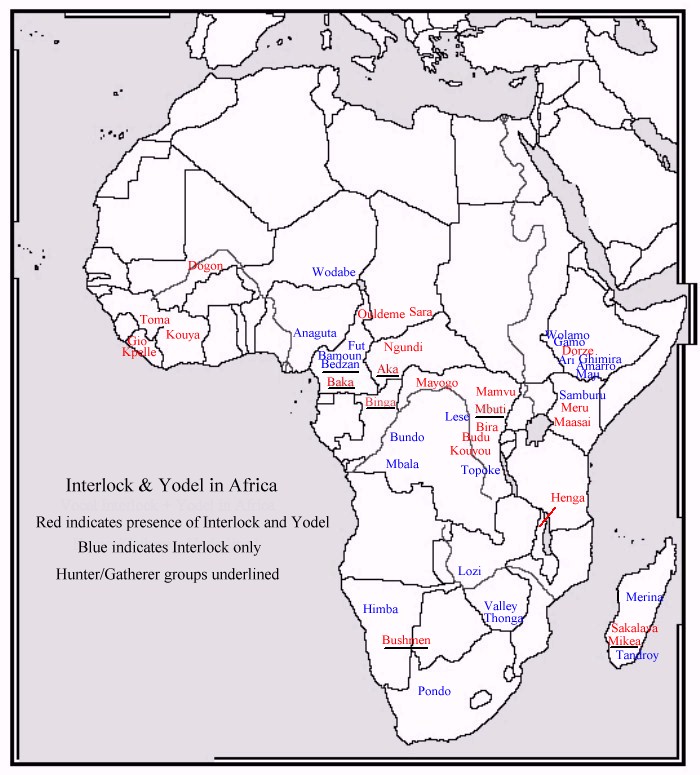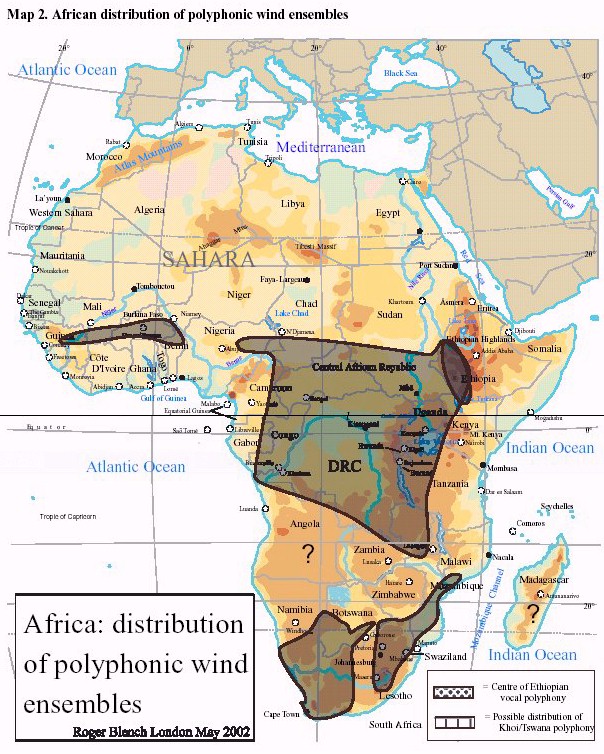The Global Jukebox was to have encapsulated most of Alan's work on performance style, including Cantometrics, but also Choreometrics, Parlametrics, etc., in a format accessible to the layman -- and especially the young. Intended originally for use in schools, but ideally suited for the Internet, it would have contained thousands of audio and video clips representing performances from all over the world, of both music and dance, linked to background information, including the Cantometric and/or Choreometric representation of each example. Both databases would have also been available for query by serious researchers.
After Lomax's two debilitating strokes, in the mid Nineties, the project languished -- and the Cantometric database remained frozen in time, accessible only via a Mac Quadra 800 that might possibly, if one were lucky, be listed for bidding on eBay. I actually did bid on one, but lost out. Thanks to Anna, and the very generous efforts of Mike del Rio, who had worked as programmer on the Global Jukebox, the dataset was updated last year, so that it is now accessible via modern database software, such as MS Access, which I am now using. Plans are afoot by Anna, and the Association for Cultural Equity, to make certain aspects of the performance style projects available to the public in the near future, including the Cantometric teaching system, the (now digitized) recordings of all the encoded music and the database itself, possibly via the Library of Congress, where much of Alan's legacy is now being preserved -- so stay tuned!
It's a strange feeling working once again with Cantometrics after so many years. It's also exciting, because, as I discover every time I work with it, the database is a tremendously flexible and powerful resource. Back in the Seventies and Eighties, some bitter battles were fought over this turf. Ultimately the entire project was rejected by the great majority of Ethnomusicologists, for a variety of reasons, some valid, others not. That time is, or should be, over. While certain of Alan's claims for both Cantometrics and Choreometrics did not stand up to scrutiny, and certain aspects of his personality rubbed many the wrong way, the methodology itself remains, in my view, perfectly valid and eminently useful, so long as one does not expect too much from it, and is willing to check its results by recourse to other sources. Warts and all, Cantometrics and Choreometrics are the only tools we have for systematic comparative research in the fields of both music and dance. And if you aren't happy with them, then by all means build something better and I'll be happty to work with that.
Now where was I? Oh yes, my map. Here it is:
 The map was produced in the following way. I first queried the database for all instances in Africa south of the Sahara where line 1, the social organization of the vocal group, was coded on point 13, i.e., as "interlocked." Here is the definition of "interlock" from the Cantometric Coding Book:
The map was produced in the following way. I first queried the database for all instances in Africa south of the Sahara where line 1, the social organization of the vocal group, was coded on point 13, i.e., as "interlocked." Here is the definition of "interlock" from the Cantometric Coding Book:
The group is divided into two or more parts which are rhythmically distinct and melodically complementary. Often there is no perceptible leadership -- each individual is equally important; but, as distinct from L//N [point 7 on the same line], there is a high degree of coordination between the parts. Although some singers may be duplicating another part at the octave or unison, the general impression is one of a group of individuals, each with his own part, interacting in such a way as to create a homogeneous texture.
Interlock is characteristic of a great many (though not all) hocketed performances, so it can give us an indication of the presence of hocket, though that trait per se was not part of the coding system. Non-hocketed performances, such as A3, "Contrapuntal Interlock," would also be included.
If even one performance from our sample for any subsaharan group was coded as interlocked, the name of the group was included on the list. I then queried all performances included in the previous search for one additional trait, on line 33, "Vocal Width": point 13, "Yodel." And again, if even one performance from any group was positive, I included the group on my list. I chose these two characteristics because they are both quite distinctive and, in my experience, also highly diagnostic for Pygmy/Bushmen style. The map reveals the results of both searches, the groups labeled in red having instances of both interlock and yodel, while the blue groups have interlock with no instances of yodel. Also, I underlined all the hunter/gatherer groups, essentially the Pygmies and Bushmen (the only exception being the Mikea hunter/gatherers of Madagascar, who have never been identified as Pygmies).
One of the most interesting aspects of the map is the fact that, with only one exception, all the hunter-gatherer groups vocalize with both interlock and yodel. The one exception is a Pygmy group, the Bedzan, who vocalize using typically P/B style interlock, but without yodel, at least as far as I was able to determine from a single CD. It's also interesting to note that all the other red groups in central Africa tend to be located in the vicinity of Pygmies or other hunter/gatherers. While the West African groups seem an exception, you'll recall from my last post that there was, apparently, at least one group of Pygmies living in southern Mali at one time, the so-called "Tellem."
Note the very interesting cluster centered in southwest Ethiopia, the Wolamo, Dorze, Ari, etc. This is the "center of Ethiopian vocal polyphony" indicated in Blench's wind ensemble map. Though I'm not acquainted with any Pygmy or Bushmen group currently living there, Cavalli-Sforza's map does indicate the presence of Pygmies in that general area. Regardless, this very distinctive grouping of cultures, some herders, some farmers, some (such as the Ari) even described as having a hierarchical political structure, but all from the same general area (and apparently speaking closely related languages), is of the greatest interest. Both archaeological and genetic evidence suggests that this could be the geographic region of origin for modern humans in Africa, as well as a possible staging area for their initial migration to Asia and beyond.
While I don't agree with Blench regarding the association of the wind ensemble traditions with the spread of the Nilo-Saharan language family from this region, I do agree that the very high density of vocal and instrumental interlock/hocket in southwest Ethiopia, so close in so many ways to that of the Pygmies and Bushmen, could be of real significance and cries out for further research.
At this point I'd like to present another side by side display, this time of Blench's wind ensemble map and my Cantometric map of SSAfrican interlock and yodel:


Note that, once again, and with only a very few exceptions, the two maps correspond quite closely. It should also be noted that there are indeed hocketed wind ensembles in parts of Madagascar, especially among the Mikea, though these were not included in Blench's map.





No comments:
Post a Comment